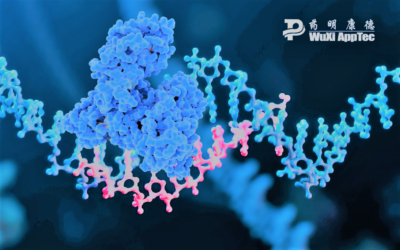The recently updated guidelines on assessing drug-drug interactions will likely improve experimental outcomes, reduce costs and streamline development timelines.
The U.S. FDA updated its guidelines for in vitro drug interaction assessment to help drug developers evaluate studies and improve strategy development to avoid drug rejection, prescribing restrictions and post-launch withdrawals from the market. In the following blog, we have highlighted the differences, which are likely to impact you, between the 2017 draft and the 2020 final guidance. We hope this will help you navigate the next steps in planning your drug development program.
The final guidance places an emphasis on in vitro approaches with cytochrome P450 (CYP) enzymes, including data analysis and interpretation of CYP induction. The guidance also emphasizes transporter proteins as the last frontier in drug-drug interaction studies as well as mathematical models to help predict measures of an investigational drug under various scenarios.
Emphasis on cytochrome P450 (CYP) enzymes
Cytochrome P450 (CYP) enzymes are responsible for ~75% of metabolic clearance. In vitro identification of human CYP enzymes involved in drug metabolism facilitates the prediction of potential risks of drug-drug interactions. Drug metabolizing enzyme identification studies, often referred to as reaction phenotyping studies, are a set of in vitro experiments that identify the specific enzymes responsible for the metabolism of a drug. Along with other information (e.g., in vivo pharmacokinetics, enzyme polymorphism or drug-drug interaction data), the 2020 guidance also recommends quantifying elimination pathways through experiments that determine which enzymes metabolize the investigational drug, often referred to as in vitro phenotyping.
Data Analysis and Interpretation of CYP Induction
The 2020 guidance accounts for uncertainties in protein binding measurements by encouraging data analysis and interpretation following drug metabolizing enzyme identification studies. Several basic methods are suggested:
- The fold-change method—using a cutoff from known positive and negative controls to calibrate the system. For example, a drug is interpreted as an inducer if it increases mRNA expression of a CYP enzyme more than 20% of the response of the positive control in a concentration-dependent manner.
- Correlation methods—using a calibration curve to predict the magnitude of a clinical induction effect. If the predicted magnitude is more than a predefined cutoff, a drug is considered to have induction potential in vivo.
- The kinetic model—calculating the R value to indicate whether the investigational drug has the potential to induce metabolizing enzymes.
Together, the suggested additional considerations provide valuable insight, inform follow up evaluations and rule out inconclusive findings.
Transporter Proteins: The Final Frontier of Drug Interactions
As an industry, our knowledge of the specific enzymes responsible for drug metabolism has expanded over the past 15 years, and each iteration of the U.S. FDA guidance reflects a deeper understanding. For example, in addition to the drug metabolizing enzymes that are largely expressed in the liver and small intestines, we now understand that many drugs are actively transported into and out of cells by a variety of transporter proteins. Transporters are expressed in tissues throughout the human body and govern the access of endogenous and exogenous substances to various sites in the body.
In concert with metabolizing enzymes, transporters govern a drug’s disposition and pharmacological action. In vitro transporter assays determine whether an investigational drug is a substrate or inhibitor of a particular transporter. However, the in vitro methods to evaluate induction of transporters are yet to be fully established. Drug transporters may be the final frontier for drug interactions and we are likely to see additional recommendations for in vitro methods to evaluate transporters in the next U.S. FDA guidance.
Mathematical Modeling
In addition to identifying some of the key issues regarding in vitro experimental conditions, the 2020 U.S. FDA guidance also emphasizes the importance of model-based drug-drug interaction prediction strategies. Mathematical models that integrate in vitro findings and are verified with clinical pharmacokinetic data can play an important role in predicting the drug-drug interaction potential of an investigational drug under various scenarios.
The mathematical models for predicting the absorption, distribution, metabolism and excretion have not changed, but the updated guidance recommends that sponsors use a more conservative approach and consider all of the following three models:
- Basic models generally serve simple purposes—identifying low levels of inhibition or induction.
- Static mechanistic models account for the disposition characteristics of both the perpetrator and the probe substrate drugs (Fahmi, Hurst, et al. 2009).
- Dynamic mechanistic models integrate system-dependent parameters (e.g., based on human physiology), drug-dependent parameters (Zhao, Zhang, et al. 2011) and their time course of changes.
Together, the three models provide insights regarding when and how to conduct a clinical drug-drug interaction study. This adds a few steps but in the long run, reduces costs and streamlines timeline development.
At WuXi AppTec we are passionate about your program and our goal is to be your partner providing guidance and expertise to make sure your development continues without disruption. If you have further questions about the updated drug-drug interaction guidance, please let us know how we can help.


